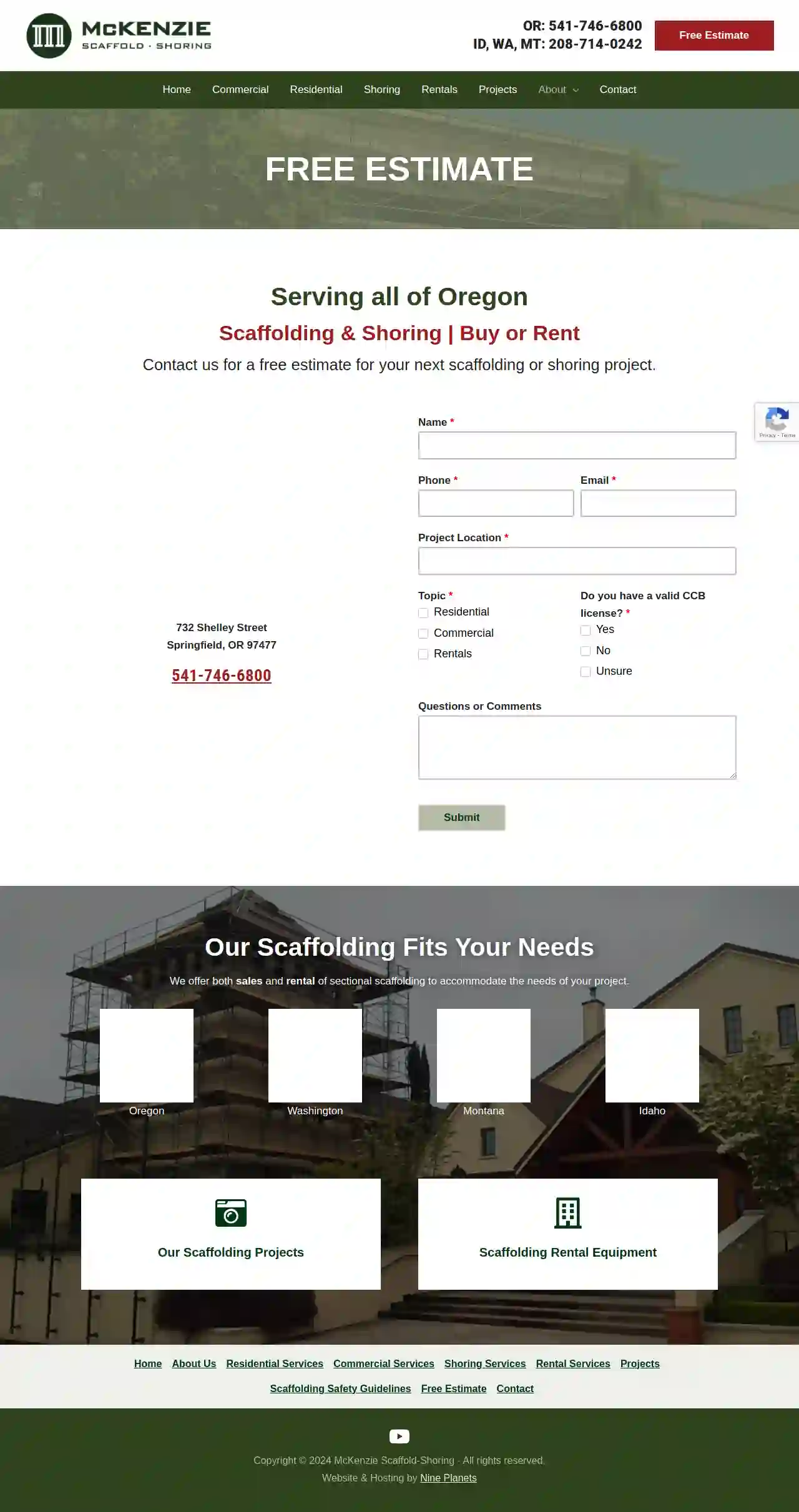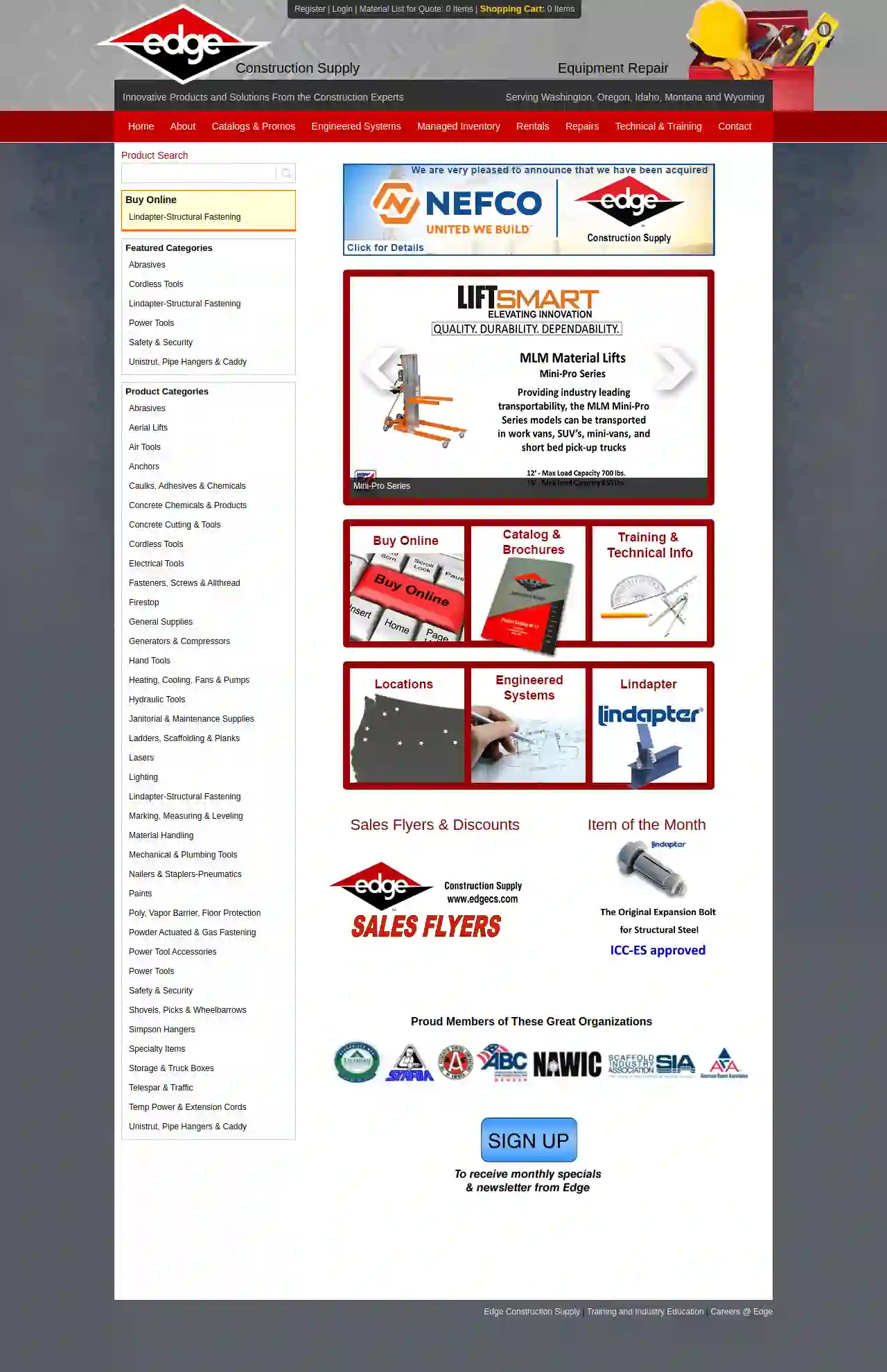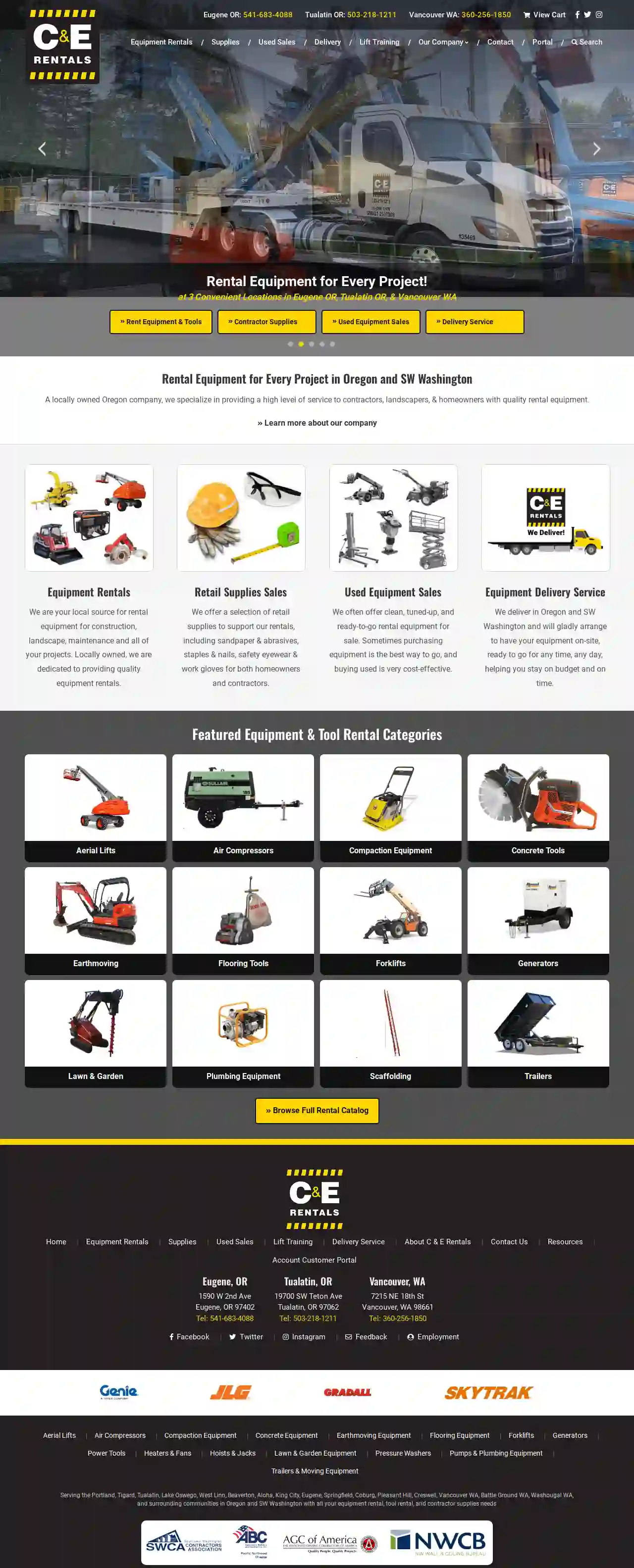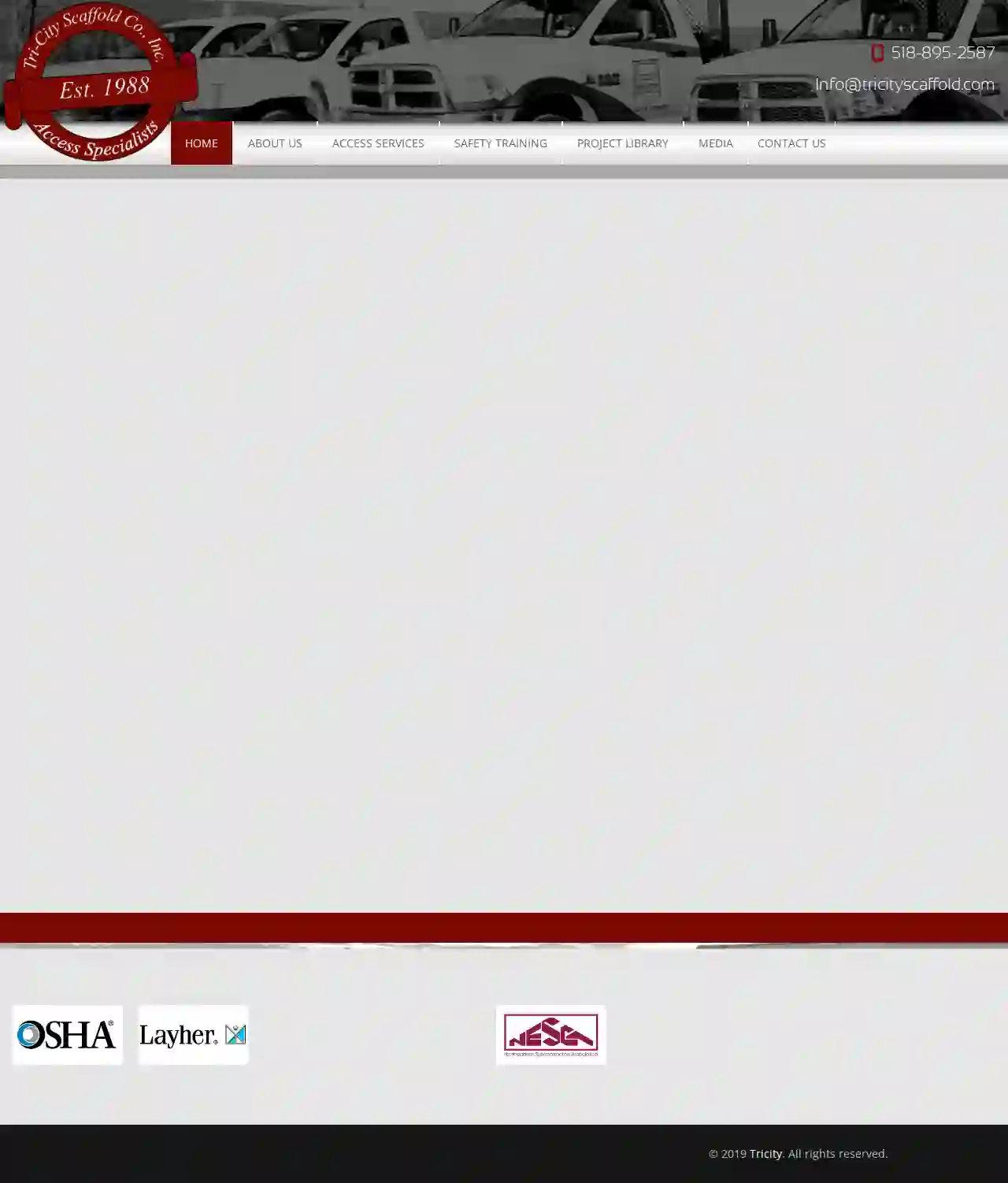Scaffolding Companies Green
Find the best Scaffolding Specialists in Green
Receive 3 FREE Scaffold Services quotes for your project today! Compare profiles, reviews, accreditations, portfolio, etc... and choose the best offer.

McKenzie Scaffold-Shoring
3.97 reviewsSpringfield, OR, 732 Shelley Street, 97477, USMcKenzie Scaffold • Shoring is a premier provider of scaffolding and shoring services, serving all of Oregon, Idaho, along with Eastern Washington and Western Montana. The company offers both sales and rental of sectional scaffolding to accommodate the needs of your project, ensuring outstanding safety performance, on-time and on-budget project management.
- Services
- Why Us?
- Accreditations
- Gallery
Get Quote
Edge Construction Supply
4.830 reviews123 Main St, Spokane, WA, 99201, USEdge Construction Supply has been serving the commercial construction and industrial markets for more than 70 years. We are headquartered in Spokane with eight additional branches including Seattle, Yakima, Kennewick, Boise, Eugene, Medford, Billings, and Idaho Falls. We proudly service our customers in Washington, Oregon, Idaho, and Montana. Our company has been built upon relationships with our customers. We provide expert service for your project and we aim to serve.
- Services
- Why Us?
- Accreditations
- Our Team
- Testimonials
- Gallery
Get Quote
C & E Rentals
4.4144 reviews1590 W 2nd Ave, Eugene, 97402, USRental Equipment for Every Project in Oregon and SW Washington A locally owned Oregon company, we specialize in providing a high level of service to contractors, landscapers, & homeowners with quality rental equipment. Learn more about our company Equipment Rentals We are your local source for rental equipment for construction, landscape, maintenance and all of your projects. Locally owned, we are dedicated to providing quality equipment rentals. Retail Supplies Sales We offer a selection of retail supplies to support our rentals, including sandpaper & abrasives, staples & nails, safety eyewear & work gloves for both homeowners and contractors. Used Equipment Sales We often offer clean, tuned-up, and ready-to-go rental equipment for sale. Sometimes purchasing equipment is the best way to go, and buying used is very cost-effective. Equipment Delivery Service We deliver in Oregon and SW Washington and will gladly arrange to have your equipment on-site, ready to go for any time, any day, helping you stay on budget and on time.
- Services
- Why Us?
- Gallery
Get Quote
BrandSafway Services Albany
47 reviewsAlbany, US- Services
- Why Us?
Get Quote
Tri-City Scaffold Co., Inc.
Delanson, NY, 282 Pannis Road, 12053, USTri-City Scaffold Co., Inc. is a family owned premier scaffolding company with a leading reputation for providing high quality and safe access solutions across the capital region and Upstate New York. Established in 1988, Tri-City Scaffold has consistently delivered expertise in access solutions across a wide range of industries meeting the needs of unique and complex projects spanning: institutional, industrial, civic, commercial, private, and government sectors. Experience, competence, and technical proficiency combined with an outstanding best practice compliance and safety record, ensures that our team of professional scaffolders persistently deliver superior results with maximum safety management. Tri-City’s unrivaled professional team of scaffold builders are the backbone of the company, with an impressive number employed at Tri-City for 14 years or more, as well as a new generation of builders that continue to cement the leading reputation of Tri-City Scaffold with every project.
- Services
- Why Us?
- Accreditations
- Our Team
- Testimonials
- Gallery
Get Quote
Performance Equipment Rental
Newburgh, NY, 5301 Route 9W, 12550, USPerformance Equipment Rental LLC is a powerful architecture and construction theme that offers a wide range of equipment for rent. With branches in New York and New Hampshire, they provide top-notch services to clients across the region. Their mission is to provide high-quality equipment and exceptional customer service.
- Services
- Why Us?
- Accreditations
- Our Team
- Testimonials
- Gallery
Get Quote- Un
United Rentals
4.731 reviewsAlbany, US- Services
- Why Us?
Get Quote - Un
United Rentals
4.125 reviewsEugene, US- Services
- Why Us?
Get Quote - La
Law's Tru Stone LLC
4.228 reviewsBend, US- Services
- Why Us?
Get Quote - Su
Sunbelt Rentals
4.550 reviewsEugene, US- Services
- Why Us?
Get Quote
Over 2,353+ Scaffolding Contractors in our network
Our scaffolding contractors operate in Green and surrounding areas!
ScaffoldingHQ has curated and vetted Top Scaffolding Companies in and around Green. Find a top & reliable pro today.
Frequently Asked Questions About Scaffolding Companies
- Tube and Clamp Scaffolding: A traditional and versatile system using individual tubes and clamps. It's highly adaptable but requires more time to erect.
- System Scaffolding: Pre-engineered systems with modular components that fit together quickly. They offer speed and efficiency, especially for larger projects.
- Suspended Scaffolding: Hung from a roof or overhead structure, ideal for high-rise buildings or areas with limited ground access.
- Mobile Scaffolding: Mounted on wheels, allowing easy movement around a worksite. Suitable for tasks like painting or plastering.
- Specialized Scaffolding: Cantilever scaffolding, rolling towers, and other specialized systems cater to specific needs.
- Experience: 'How long have you been in business, and what experience do you have with projects like mine?'
- Licensing and Insurance: 'Are you fully licensed and insured, and can I see proof of coverage?'
- Safety Record: 'What are your safety procedures, and how do you ensure worker safety on the job site?'
- References: 'Can you provide references from previous clients?'
- Quotes and Costs: 'Can you provide a detailed quote that outlines all costs, including materials, labor, and any additional services?'
- Project Timeline: 'What is the estimated timeframe for scaffolding erection and dismantling?'
- Communication: 'How will you communicate with me throughout the project?'
- Stability and Level: The scaffolding is level and firmly supported by a solid foundation.
- Secure Connections: All components (tubes, clamps, fittings) are properly connected and tightened.
- Guardrails and Toeboards: Adequate guardrails and toeboards are in place to prevent falls.
- Platforms and Decking: Platforms are secure, free from damage, and provide adequate working space.
- Access and Egress: Safe access and exit points are available (ladders, stairs).
- Weather Protection: Appropriate measures are in place to protect workers from adverse weather conditions (e.g., wind screens, covers).
- Clearance from Hazards: The scaffolding is a safe distance from power lines, trees, or other potential hazards.
- Scaffolding Tag: The scaffolding tag is up-to-date and displays the last inspection date, maximum load capacity, and any restrictions.
- Online Directories: Use specialized directories like ScaffoldingHQ to search for scaffolding companies in your area.
- Search Engines: Use Google or other search engines to search for 'scaffolding companies near me' or 'scaffolding rental [your location]'.
- Local Construction Associations: Contact local construction associations for recommendations.
- Word-of-Mouth Referrals: Ask friends, family, or colleagues for recommendations based on their past experiences.
What are the different types of scaffolding?
What questions should I ask a scaffolding company before hiring them?
What should I look for during a scaffolding inspection?
How can I find scaffolding companies near me?
What are the different types of scaffolding?
- Tube and Clamp Scaffolding: A traditional and versatile system using individual tubes and clamps. It's highly adaptable but requires more time to erect.
- System Scaffolding: Pre-engineered systems with modular components that fit together quickly. They offer speed and efficiency, especially for larger projects.
- Suspended Scaffolding: Hung from a roof or overhead structure, ideal for high-rise buildings or areas with limited ground access.
- Mobile Scaffolding: Mounted on wheels, allowing easy movement around a worksite. Suitable for tasks like painting or plastering.
- Specialized Scaffolding: Cantilever scaffolding, rolling towers, and other specialized systems cater to specific needs.
What questions should I ask a scaffolding company before hiring them?
- Experience: 'How long have you been in business, and what experience do you have with projects like mine?'
- Licensing and Insurance: 'Are you fully licensed and insured, and can I see proof of coverage?'
- Safety Record: 'What are your safety procedures, and how do you ensure worker safety on the job site?'
- References: 'Can you provide references from previous clients?'
- Quotes and Costs: 'Can you provide a detailed quote that outlines all costs, including materials, labor, and any additional services?'
- Project Timeline: 'What is the estimated timeframe for scaffolding erection and dismantling?'
- Communication: 'How will you communicate with me throughout the project?'
What should I look for during a scaffolding inspection?
- Stability and Level: The scaffolding is level and firmly supported by a solid foundation.
- Secure Connections: All components (tubes, clamps, fittings) are properly connected and tightened.
- Guardrails and Toeboards: Adequate guardrails and toeboards are in place to prevent falls.
- Platforms and Decking: Platforms are secure, free from damage, and provide adequate working space.
- Access and Egress: Safe access and exit points are available (ladders, stairs).
- Weather Protection: Appropriate measures are in place to protect workers from adverse weather conditions (e.g., wind screens, covers).
- Clearance from Hazards: The scaffolding is a safe distance from power lines, trees, or other potential hazards.
- Scaffolding Tag: The scaffolding tag is up-to-date and displays the last inspection date, maximum load capacity, and any restrictions.
How can I find scaffolding companies near me?
- Online Directories: Use specialized directories like ScaffoldingHQ to search for scaffolding companies in your area.
- Search Engines: Use Google or other search engines to search for 'scaffolding companies near me' or 'scaffolding rental [your location]'.
- Local Construction Associations: Contact local construction associations for recommendations.
- Word-of-Mouth Referrals: Ask friends, family, or colleagues for recommendations based on their past experiences.